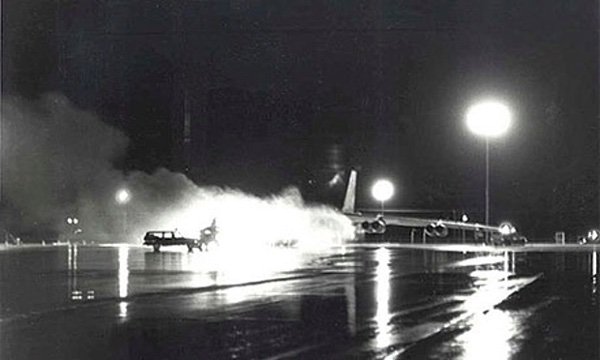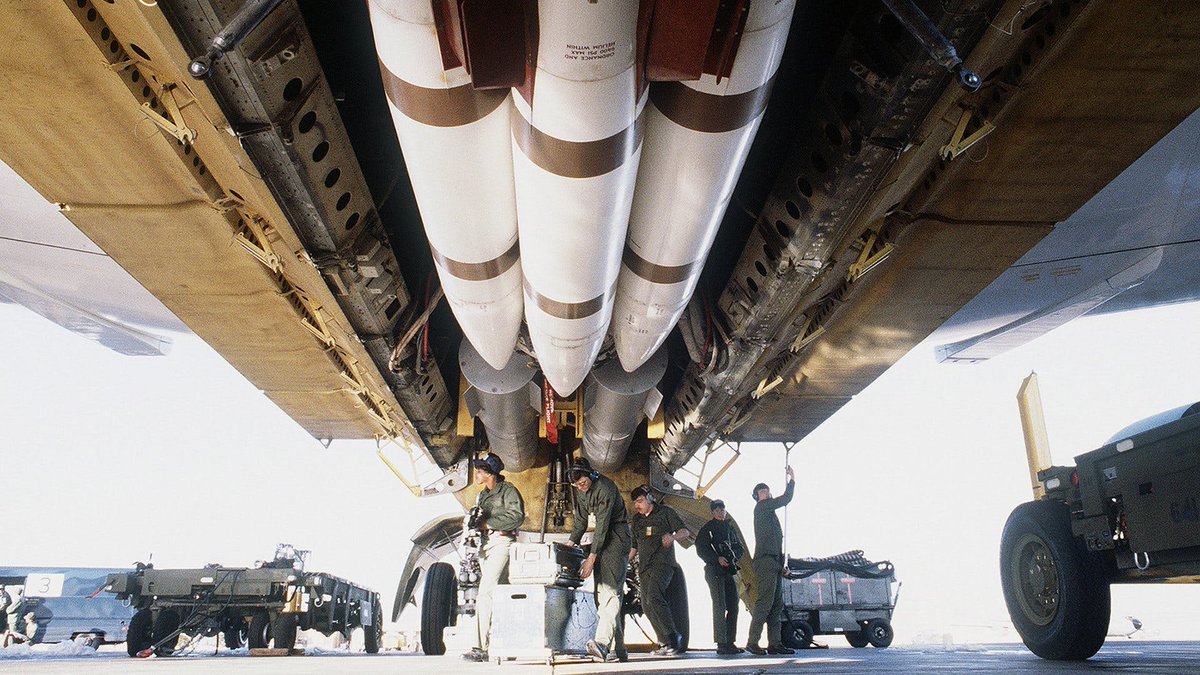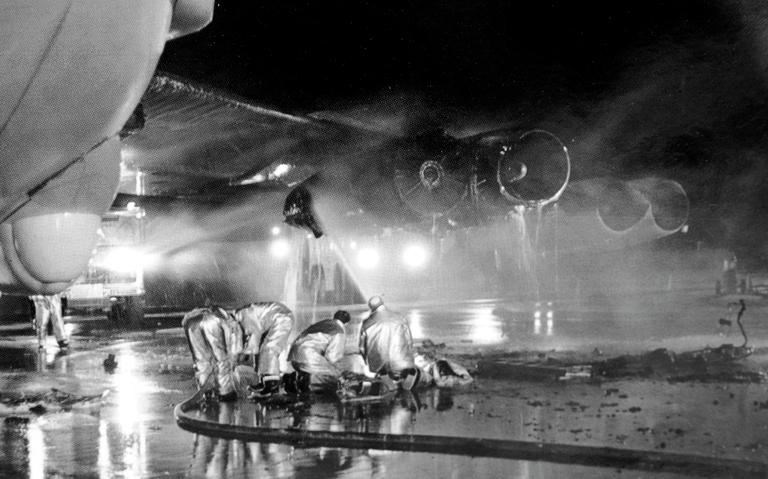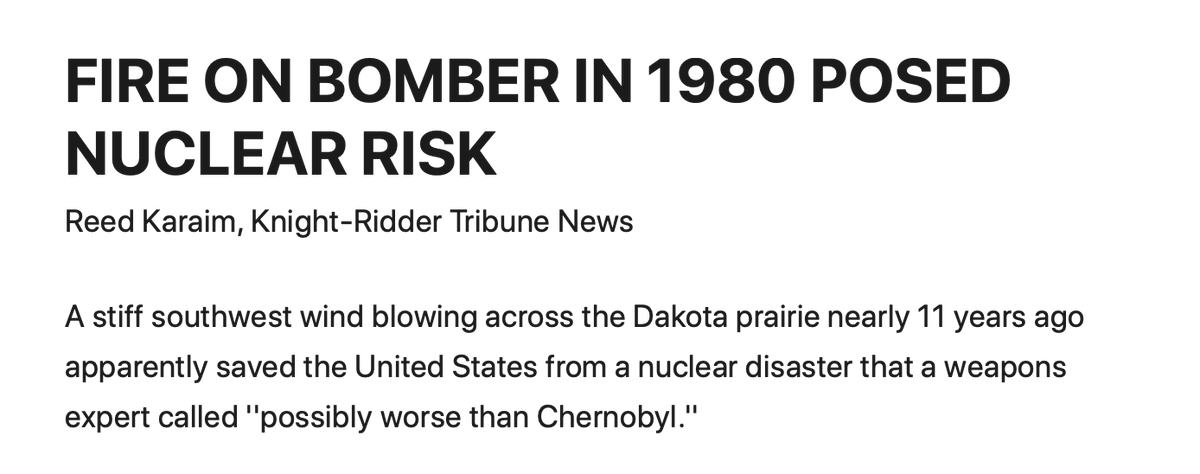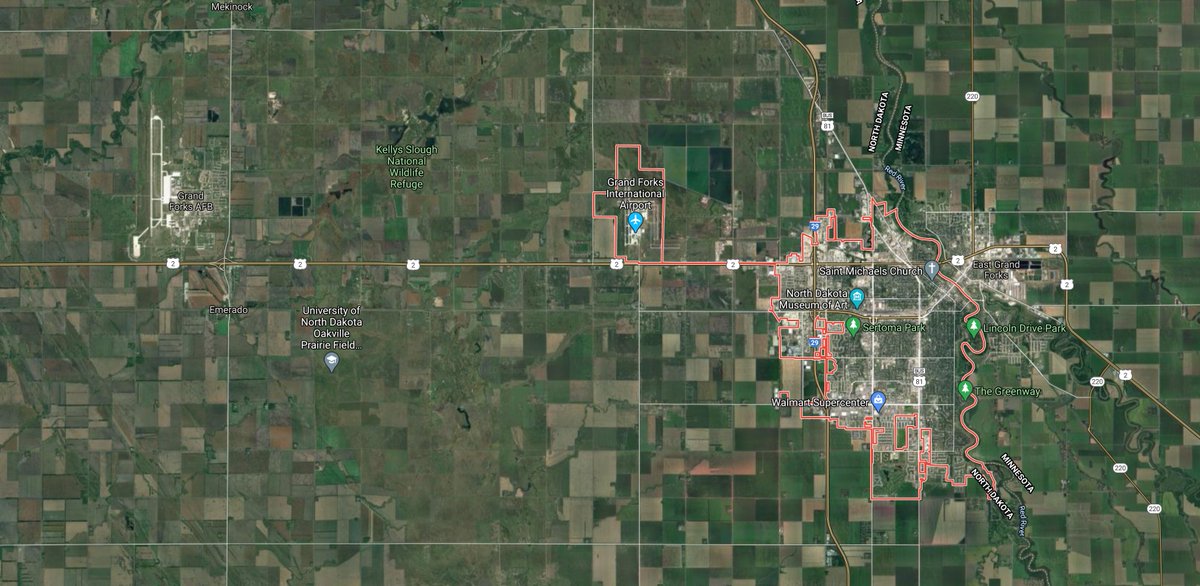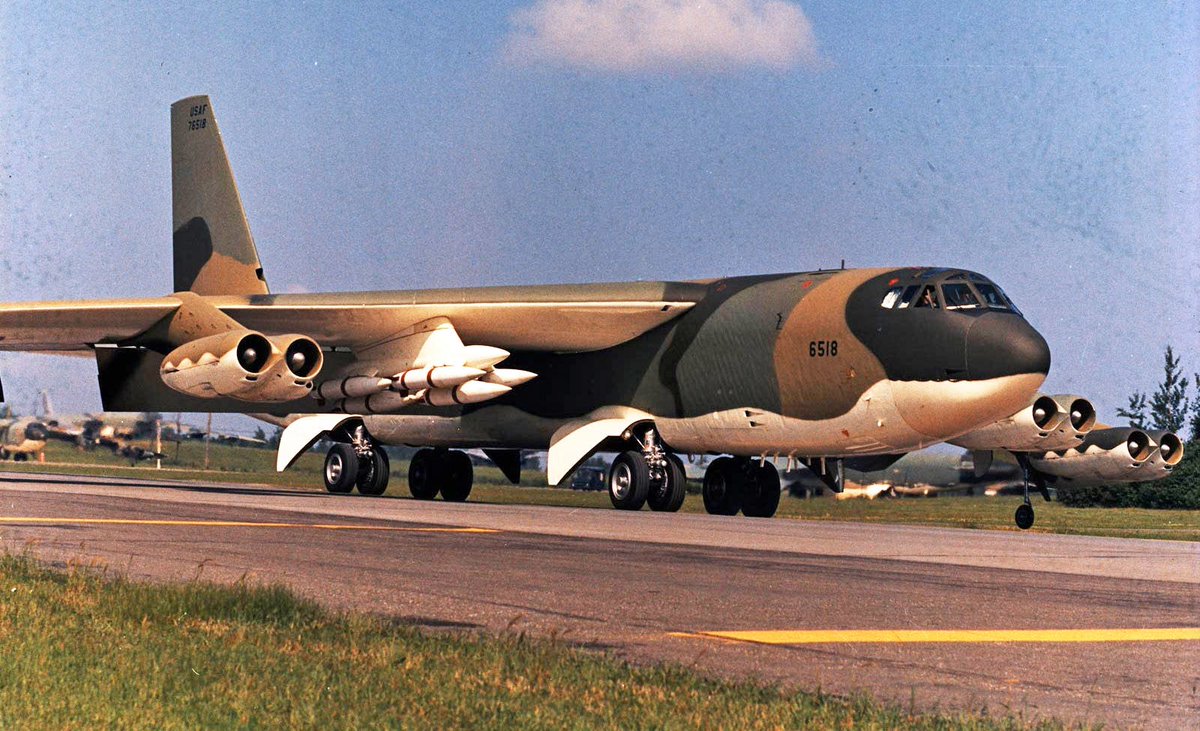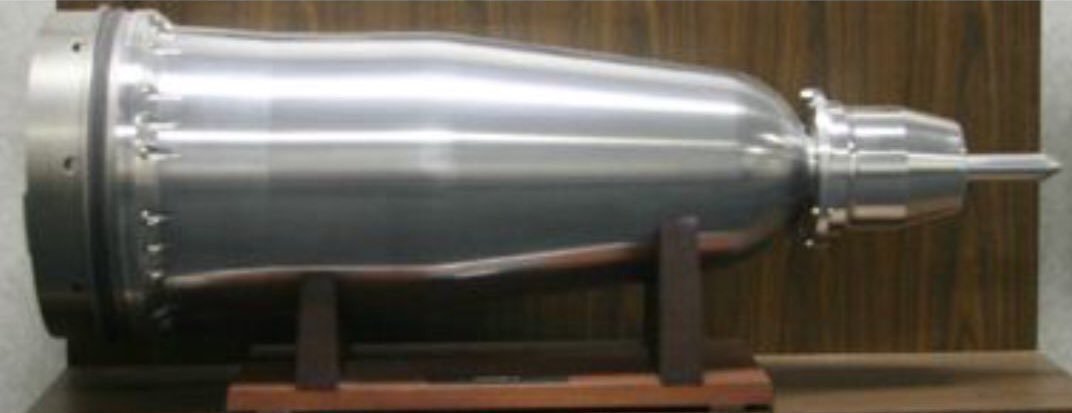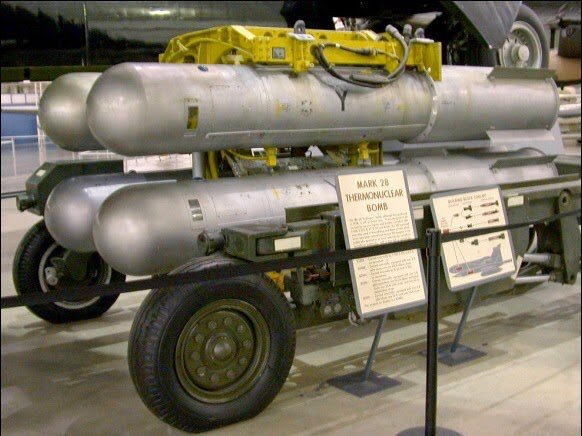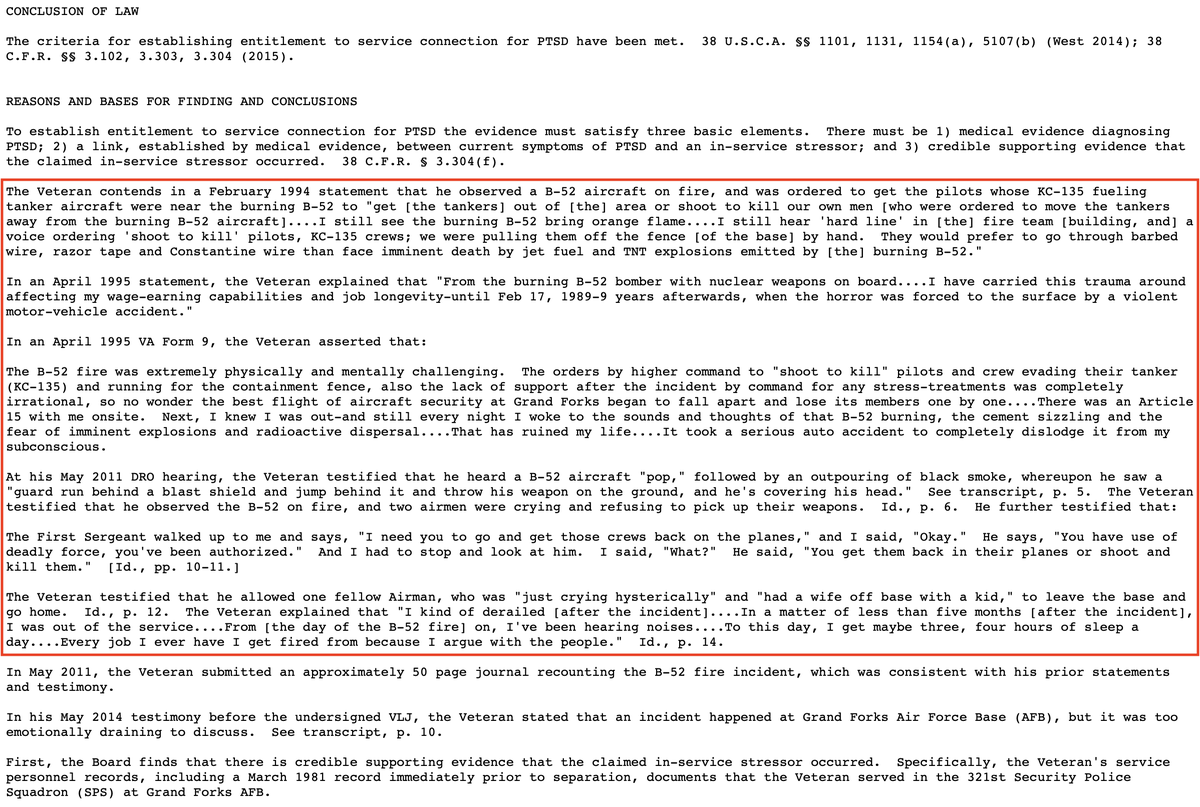Tonight in 1980 at Grand Forks AFB, North Dakota, the number five engine on the right wing of a B-52 on ground alert caught fire during a drill. The aircraft was loaded with 8 Short-Range Attack Missiles (armed with 170-200-kt W69 warheads) and 4 B28 bombs (70 kt to 1.45 Mt).
That night, a southeast wind gusted up to 35 mph. The B-52 pointed in that direction. That alone kept the flames away from the fuselage. Had the nose been facing west, the fire would have incinerated all six crew members as they evacuated and burned the weapons in the bomb bay.
The fire burned for three hours. It was only extinguished when a civilian base fire inspector boarded the B-52 and shut off the fuel. Had the nukes caught fire and their conventional high explosives detonated, a radioactive plume would have drifted over Grand Forks and beyond.
In 1988, then-Livermore Laboratory director Roger Batzel told the Senate Defense Appropriations Subcommittee that if that the fire had reached the bomb bay, the HE "would have detonated" and plutonium would have been scattered across 60 sq. miles of North Dakota and Minnesota.
"You are talking about something that in one respect could be probably worse than Chernobyl," Batzel testified during the closed hearing, & #39;because you have plutonium in the soil and on the soil, which you have to clean up. I wouldn& #39;t want either one.& #39;" https://www.chicagotribune.com/news/ct-xpm-1991-08-13-9103280297-story.html">https://www.chicagotribune.com/news/ct-x...
Worse still—and unmentioned by Batzel—a design flaw in the B28 bomb meant that if exposed to prolonged heat, two wires too close to the casing could short circuit, arm the bomb, trigger an accidental detonation of the HE surrounding the core, and set off a nuclear explosion.
That would have destroyed Grand Forks (home to ~60,000 people) and showered Duluth or Minneapolis-St. Paul with lethal fallout, depending on which way the wind was blowing. The USAF subsequently determined the engine fire was caused by a small missing nut on the fuel strainer.
In 1990, then-Secretary of Defense Dick Cheney ordered SRAMs removed from all alert bombers after all three nuclear weapons laboratory directors warned its W69 warhead posed an unacceptable risk in case of fire, an extreme danger they had first warned the DOD about in 1974.
However, SRAMs were not actually removed from the nuclear stockpile until 1993. In 1999, the last W69 was dismantled at the Pantex Plant in Texas. But not until early 2016 were all of its thermonuclear secondary components finally disassembled at the Y-12 Plant in Tennessee.
After years of delays by the DOD—which put nuclear warfighting ahead of safety—B28 bombs finally began receiving a safety retrofit in 1984, although work stalled a year later when funds ran out (resuming only in 1988). In 1991, it was finally retired after 33 years of service.
POSTSCRIPT: A USAF veteran who was a police officer at Grand Forks at the time of the fire and suffers from PTSD as a result told the VA in 1994 and 2011 he was ordered to shoot KC-135 pilots who refused to move their tankers away from the burning B-52. https://www.va.gov/vetapp16/Files4/1633658.txt">https://www.va.gov/vetapp16/...
This unnamed veteran first sought treatment and benefits from the Department of Veterans Affairs for service-connected post-traumatic stress disorder caused by this accident in 1994. His claim was denied multiple times until an appeals board finally granted it in August 2016.

 Read on Twitter
Read on Twitter